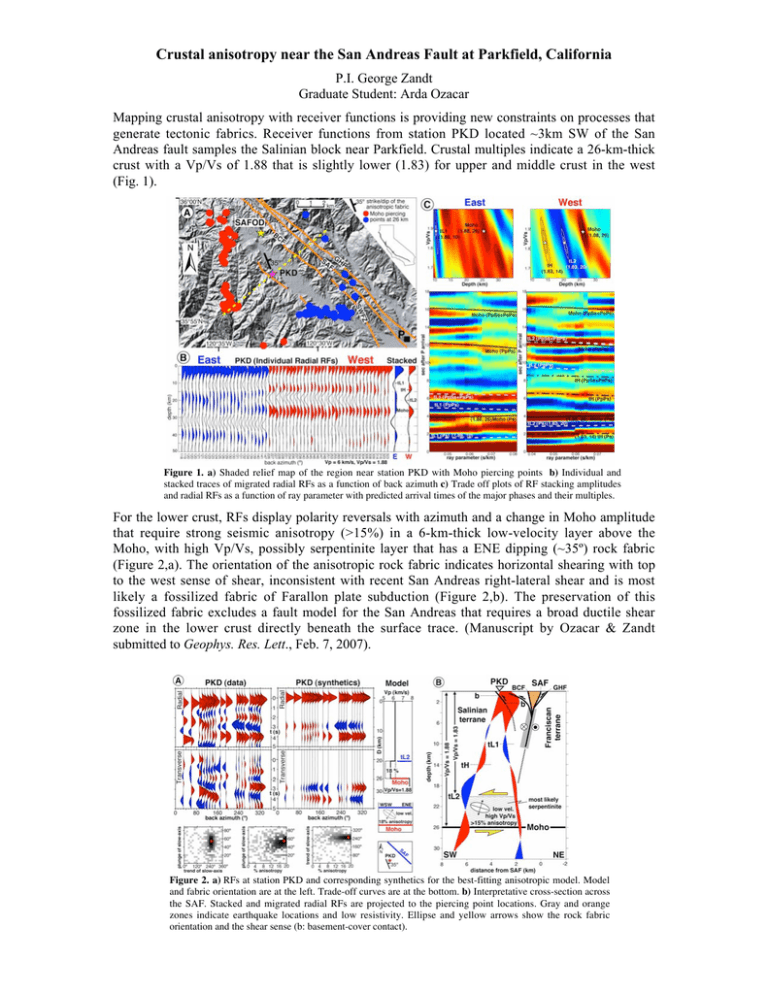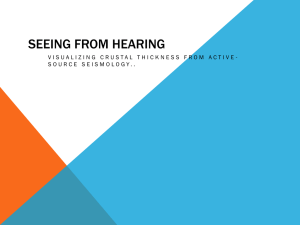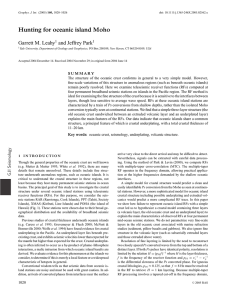Crustal anisotropy near the San Andreas Fault at Parkfield, California
advertisement

Crustal anisotropy near the San Andreas Fault at Parkfield, California P.I. George Zandt Graduate Student: Arda Ozacar Mapping crustal anisotropy with receiver functions is providing new constraints on processes that generate tectonic fabrics. Receiver functions from station PKD located ~3km SW of the San Andreas fault samples the Salinian block near Parkfield. Crustal multiples indicate a 26-km-thick crust with a Vp/Vs of 1.88 that is slightly lower (1.83) for upper and middle crust in the west (Fig. 1). Figure 1. a) Shaded relief map of the region near station PKD with Moho piercing points b) Individual and stacked traces of migrated radial RFs as a function of back azimuth c) Trade off plots of RF stacking amplitudes and radial RFs as a function of ray parameter with predicted arrival times of the major phases and their multiples. For the lower crust, RFs display polarity reversals with azimuth and a change in Moho amplitude that require strong seismic anisotropy (>15%) in a 6-km-thick low-velocity layer above the Moho, with high Vp/Vs, possibly serpentinite layer that has a ENE dipping (~35º) rock fabric (Figure 2,a). The orientation of the anisotropic rock fabric indicates horizontal shearing with top to the west sense of shear, inconsistent with recent San Andreas right-lateral shear and is most likely a fossilized fabric of Farallon plate subduction (Figure 2,b). The preservation of this fossilized fabric excludes a fault model for the San Andreas that requires a broad ductile shear zone in the lower crust directly beneath the surface trace. (Manuscript by Ozacar & Zandt submitted to Geophys. Res. Lett., Feb. 7, 2007). Figure 2. a) RFs at station PKD and corresponding synthetics for the best-fitting anisotropic model. Model and fabric orientation are at the left. Trade-off curves are at the bottom. b) Interpretative cross-section across the SAF. Stacked and migrated radial RFs are projected to the piercing point locations. Gray and orange zones indicate earthquake locations and low resistivity. Ellipse and yellow arrows show the rock fabric orientation and the shear sense (b: basement-cover contact).











